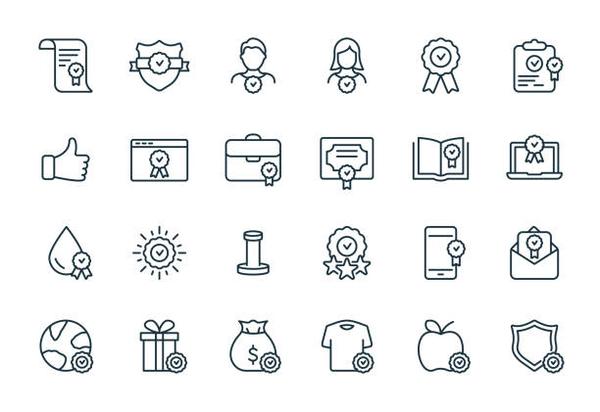Digital credentials have emerged as a powerful tool for both organizations and individuals to showcase their skills, improve the hiring process and provide evidence of ongoing professional development. To maximize their impact it is essential to create a clearly defined plan.
This complete guide to Digital Credentials from Pearson’s Acclaim digital badge platform will help you navigate the changing landscape.
Traditional Degrees vs. Digital Credentials
Many professionals who are aspiring look at university degrees and courses as their best networking opportunities digital credentials can help them gain the necessary skills for career advancement in a quicker manner. Certain programs focus on developing management and leadership abilities while others are focused on acquiring in-demand technical skills, and they all offer shorter time commitments than traditional degrees.
Digital credentials are an increasing trend within higher education. They also represent an evolution in the way that the hiring process works. They’re not a replacement for traditional degrees and do not hold the same importance for employers.
It is essential that both individuals and organizations have a strategy for digital credentials in place to maximize the benefits of this technology. It is important to understand the various kinds of digital credentials, to assess their value in relation to your goals as well as the needs of your target audience, and to decide how you can use them to further your professional or organizational goals. This means tracking and analysing the results of your recruitment, engagement and personal development.
Advantages of Digital Credentials
Digital credentials offer many advantages for individuals, such as increased exposure, lifetime learning and upgrading in security, as well as speedier verification. Digital credentials can be used on any device that is web-connected and easily shared via social media and professional networks.
These qualifications can be used as a form of organic marketing for credential issuers to draw students or employees who value the credibility of these verifiable and shareable credentials. Additionally, they can help streamline the verification process by reducing costs and increasing efficiency.
It is crucial for organisations and individuals to come up with an approach to digital credentialing. Be aware of the requirements and objectives of both organizations and individuals and choose a platform that is most suitable for them. It is also important to work with other institutions, industry associations, and credentialing agencies to help promote the adoption of digital credentials as well as to create standardized frameworks to facilitate their use. This will help create a positive and connected ecosystem for digital credentials which will ensure its success in the long term.
Blockchain Technology for Education
Blockchain technology is employed in education to offer numerous benefits to both businesses and individuals. It offers strong security and transparency.
Blockchain is most commonly associated with crypto. It’s a digital ledger that keeps track of chronological transactions. Every new record is cryptographically linked to the previous one and makes it extremely difficult to alter or fake records. Additionally blockchain is completely transparent, with every network user having a copy of the entire database, allowing for peer-to-peer verification.
One possible application for this technology is the verification of academic qualifications. The variety of schools and the paperwork involved can create a challenge to verify academic degrees or other achievements. This process can be streamlined by blockchain, saving both time and money for students and employers.
In addition, blockchain can streamline the transfer of credit between universities which allows greater flexibility and mobility for students. It can also help safeguard intellectual property by using smart contracts to time stamp and encrypt content, preventing unauthorised use or plagiarism. It can also automate license agreements, which ensure that creators get fair compensation for their efforts.
Flexible Digital Credentials
Since digital certificates are becoming more popular, it is important to make sure that they can be easily integrated with existing systems. It will make it easier for individuals and organizations to issue and authenticate digital credentials. This integration can be facilitated by the development of APIs. This will ensure seamless integration for everyone involved.
Another important aspect is to make sure that digital credentials are updated in real-time. This can help minimize fraud and false representation, as well prevent outdated credentials or certificates from being granted. To achieve this, blockchain technology can be utilized in conjunction with cryptographic signatures. This will ensure that credentials are not altered or forged.
Furthermore, digital credentials should be designed to promote continuous learning and upgrading. This will ensure that workers have the necessary skills and knowledge to keep up with the ever-changing market. They can also be used to demonstrate an organization’s commitment to transparency, innovation, and ongoing learning. They can also improve the management of talent and increase the efficiency of workers.
Verification of Digital Credentials
Digital credentials are made to be resistant to manipulation and include digital signatures, or blockchain technology. This makes them highly reliable and minimizes the chance of fraud. They are also a good method to confirm a person’s qualifications and identity.
Digital credentials offer more access and control for users who want to control their credentials in their own way. This includes deciding the time to disclose them with whom they can be verified and how they will be displayed. It allows people to display their achievements in a manner that is in line with their personal and professional objectives.
To maximize their value, it is important that digital credentials be seamlessly integrated with existing systems. This will help to streamline processes and improve user experiences. It is essential that they be accessible to all people with different backgrounds and https://lambanggiagiare.net/ skills. This is possible by fostering cross-sector collaboration and by investing in initiatives that make people aware and more accepting of digital credentials.




